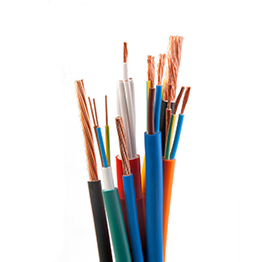
When it comes to electrical wiring, the choice between solid wire and stranded wire is crucial for ensuring the efficiency, durability, and safety of your electrical systems. Both types of wires have distinct characteristics, making them suitable for specific applications. Understanding their differences, applications, and advantages can help you choose the best option for your needs.
What is Solid Wire?
Solid wire is a single, continuous strand of conductive material, typically copper or aluminum. It is straightforward in design and widely used in various electrical systems.
Attributes of Solid Wire:
- Durability: Solid wire is robust and less prone to breaking, making it ideal for fixed installations.
- Conductivity: The continuous structure ensures minimal resistance and excellent conductivity.
- Ease of Use: Its rigid structure makes it easier to connect to terminal blocks and other components.
- Cost-Effective: Solid wire is generally cheaper to manufacture and purchase compared to stranded wire.
Applications of Solid Wire:
- Residential Wiring: Ideal for electrical outlets, light switches, and other fixed systems.
- Underground Applications: Used in conduits and outdoor installations due to its durability and resistance to corrosion.
What is Stranded Wire?
Stranded wire consists of multiple small strands of wire twisted together to form a single conductor. This design enhances its flexibility and adaptability.
Attributes of Stranded Wire:
- Flexibility: Its multi-strand design allows for greater flexibility, making it ideal for applications requiring frequent movement.
- Resistance to Fatigue: The flexibility reduces the risk of breaking under repetitive motion or vibration.
- Complex Manufacturing: Stranded wire is more labor-intensive to produce, leading to higher costs.
Applications of Stranded Wire:
- Portable Devices: Commonly used in appliances, tools, and automotive wiring.
- Industrial Machinery: Ideal for environments with high vibration or movement.
- Audio Systems: Used in speaker and headphone wiring due to its flexibility and efficient signal transmission.
Comparison: Solid vs. Stranded Wire
- Flexibility: Stranded wire is far more flexible than solid wire, making it the go-to choice for applications requiring frequent bending or movement.
- Durability: Solid wire is more durable in fixed installations, while stranded wire resists fatigue better in dynamic environments.
- Conductivity: Solid wire offers slightly better conductivity due to its uninterrupted structure, but the difference is negligible in most applications.
- Ease of Installation: Solid wire is easier to insert into terminal blocks, while stranded wire may require ferrules or crimping for proper connections.
- Cost: Solid wire is typically more affordable than stranded wire due to simpler manufacturing processes.
Why Choose Solid Wire Over Stranded Wire?
Solid wire is the better choice for:
- Fixed installations where flexibility is not a concern.
- Cost-sensitive projects, as it is more budget-friendly.
- Underground or outdoor installations, due to its resistance to corrosion and environmental factors.
Why Choose Stranded Wire Over Solid Wire?
Stranded wire is ideal for:
- Applications requiring flexibility, such as portable tools and appliances.
- Environments with frequent vibration, like automotive and industrial settings.
- Audio and signal applications, where precise connections and minimal fatigue are essential.
Conclusion
The decision between solid and stranded wire depends on the specific requirements of your project. Solid wire offers durability, cost-effectiveness, and ease of use in fixed installations, while stranded wire excels in flexibility and fatigue resistance for dynamic environments. By understanding the attributes and applications of each type, you can make an informed choice that ensures the longevity, safety, and performance of your electrical system.

